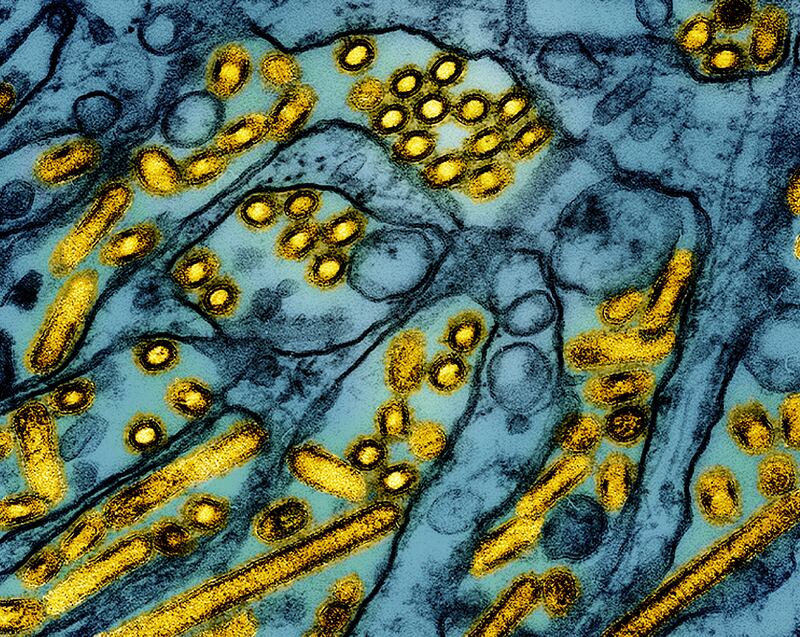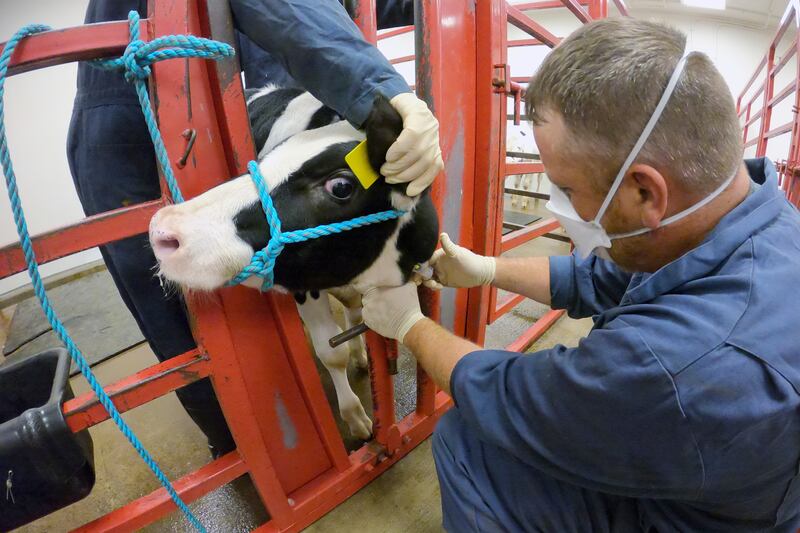Bird flu has claimed its first human in the United States, but health officials say the risk remains low and there are precautions to stay safe. They also say they’re vigilantly monitoring for signs that the risk is growing.
The death occurred in Louisiana to an individual who was older than 65. While no demographic information other than age was given, health officials said that individual had underlying medical problems and had been in direct contact with a backyard flock of birds that were ill. He or she suffered severe respiratory symptoms and was hospitalized.
The Centers for Disease Control and Prevention said that sequencing of two samples of the avian influenza virus taken from the upper respiratory tract of that person were compared to samples previously taken from dairy cows, wild birds, poultry and other human cases of H5N1 avian influenza in the U.S. and Canada. The sample indicated that the virus mutated in the patient after infection, possibly making the illness more severe.
Despite that, the CDC report said that the public health agency still believes the risk to the general public associated with the ongoing U.S. bird flu outbreak “has not changed and remains low. The detection of a severe human case with genetic changes in a clinical specimen underscores the importance of ongoing genomic surveillance in people and animals, containment of avian influenza A(H5) outbreaks in dairy cattle and poultry, and prevention measures among people with exposure to infected animals or environments.”
Not the first human U.S. case
There have been 66 reported cases of bird flu in the U.S. — all but this one with symptoms that were mild, per the CDC. The majority of cases have involved farmworkers who had direct contact with infected dairy cows or poultry. Symptoms have typically been conjunctivitis, which is sometimes called pink eye, or manageable respiratory symptoms.
Besides Louisiana’s single deadly case, human bird flu infections have also been reported in California (37 cases), Colorado (10), Iowa (1), Michigan (2), Missouri (1), Oregon (1), Texas (1), Washington (11) and Wisconsin (1), according to the CDC. All but two cases arose from known exposure to infected animals.
The public health agency said it’s using its flu tracking systems to look for signs of H5 bird flu in people.

The risk is low in part because there have been no known transmissions of bird flu from a person who had it to another person, the CDC said.
Michael Osterholm, a University of Minnesota infectious disease researcher, explained to The Associated Press how that transmission can occur. “To enter a cell, the virus needs to have a key that turns the lock,” he said. Mutations mean that it’s possible the “key” could change enough to do so, so health officials are very watchful. But there’s no evidence that key has yet been forged.
“Is this an indication that we may be closer to seeing a readily transmitted virus between people? No,” Osterholm told AP. “Right now, this is a key that sits in the lock, but it doesn’t open the door.”
The patient who died and a Canadian girl who was very sick but recovered had a similar mutation, according to The New York Times. “Both patients carried a version of the virus that is circulating in wild birds, distinct from the one causing the outbreak in dairy cattle,” the article reported.
“H5N1 has been circulating in wild birds for several years and in dairy cattle for about a year. The outbreak has shown no signs of abating, affecting more than 900 herds in 16 states. The virus has also spread from dairy farms to poultry farms, and remains widespread in wild birds,” per the Times.
Efforts are underway to create a vaccine for bird flu, but officials warn that the regular influenza vaccine does not protect against the avian variety.
Take simple precautions
The spread of H5N1 bird flu among, first, wild birds and animals that came in contact with them, then into dairy cow herds, has garnered headlines for months. The growing prevalence of exposures puts humans at some risk. But there are precautions people can take to stay safe, according to health experts.
- The most important advice to stay safe is to avoid contact with sick animals, poultry, dairy cattle and wild birds. People who encounter sick animals should not handle them. If it cannot be avoided, individuals should take real precautions that would prevent the virus from entering the eyes, nose and mouth.
- People should wear gloves, masks and other personal protective equipment, avoid touching their face and thoroughly wash their hands and any surfaces that might be contaminated. Better still, don’t handle the animal at all.
- Health officials also warn people not to drink raw milk, which could contain the virus. The Times reported that no human cases have been linked to the liquid, but “cats in multiple states have died after drinking virus-laden milk.”
- The CDC also recommends not touching any surfaces or materials (like animal litter or bedding) that is contaminated with saliva, mucous or animal feces from birds or other animals suspected or known to have been infected with bird flu.
- Cooking meat and poultry at recommended temperatures kills bacteria and viruses, per the CDC.


